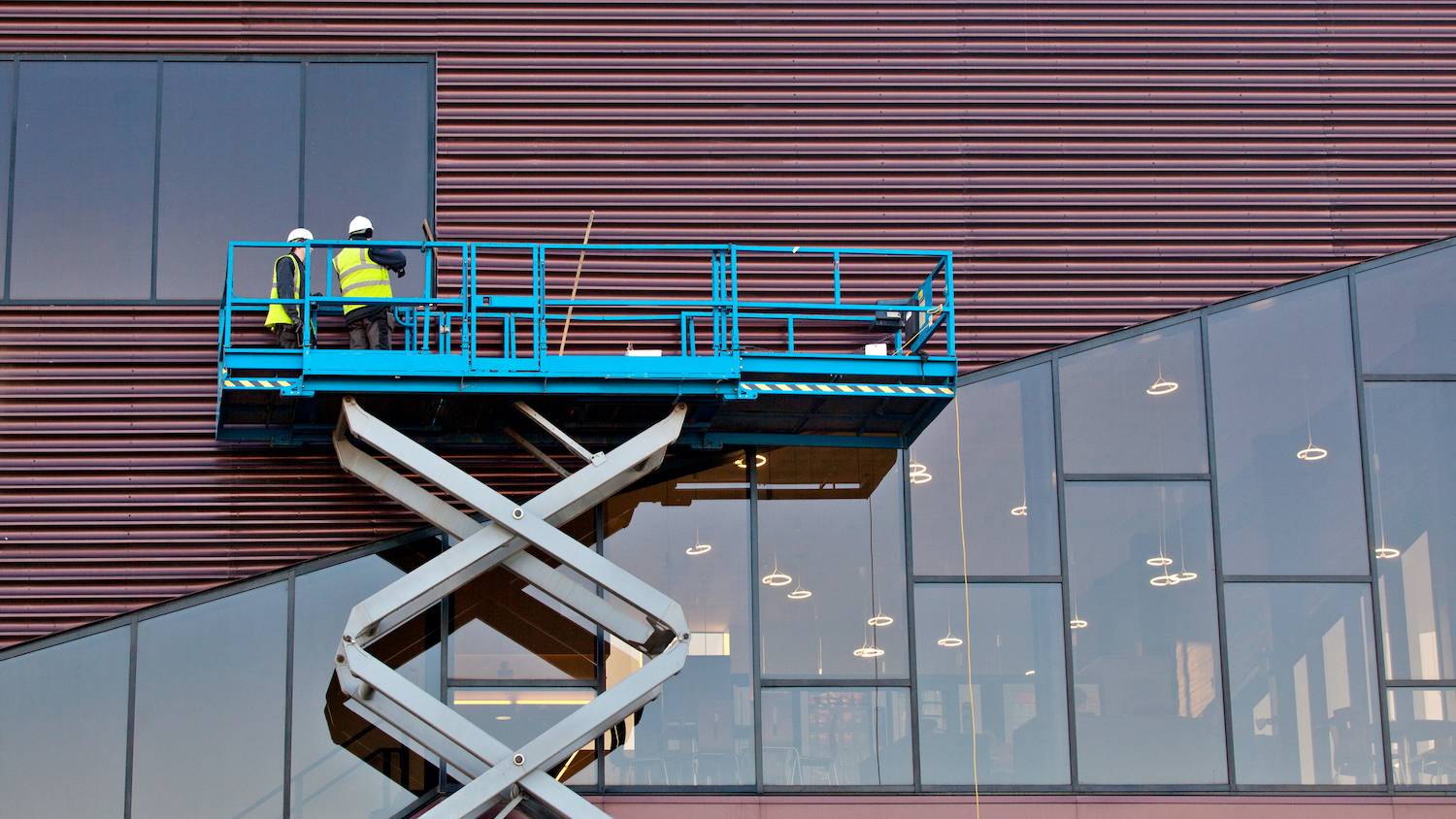
A combination of hi-tech gadgetry and new shopping experiences provided by the likes of fashion specialists Hollister (above) and Abercrombie & Fitch (right) and electronics powerhouse Apple (below) are among the latest trends in retail. Stephen Cousins reports on what construction firms can look forward to.
Christmas is coming and the goose is getting fat, but sadly the same can’t be said of many retailers’ balance sheets. The effects of the new age of austerity, now predicted to last for decades, compounded by the increasing popularity of online shopping, has left many high streets in a fight for survival and a swath of retailers either out of business or struggling to stay afloat amid tumbling sales.
But it isn’t all doom and gloom. Emerging retail trends show how innovative IT and increased internet usage, coupled with changes to shopping environments, will alter the size, location and internal fit-out of retail buildings and attract people back onto the high street.
Fashion stores such as Ted Baker, SuperDry, TopShop and Primark have reported record profits, and last month Debenhams said the high street was “alive and well” as it announced plans to modernise 25 stores and open nine new outlets over the next four years. Meanwhile, supermarkets Tesco, Morrisons and Waitrose are all pushing ahead with expansion plans.
Large retail centres, including Bluewater in Kent, the Trafford Centre in Greater Manchester, and London’s newly-opened Westfield Stratford City also continue to be a big pull for shoppers, the latter reportedly taking more than £20m during its first week of opening.


Retail experts have noted an increased market polarisation as shoppers seek out either budget purchases, or desirable brands, says Derek Pitcher, managing director at construction and property consultancy Cyril Sweett. “If you’re just mid-market and you don’t have that must-have product, or one that’s perceived to be really good value, then there’s a danger you’ll be squeezed in the middle,” he says. “It’s telling that Poundland has posted a 34% jump in annual profits.”
Whatever the true state of the retail market, it’s clear that stores can no longer afford to ignore the internet. Online sales accounted for £44bn, or 10.7% of UK retail trading in 2010, according to a survey commissioned by shopping search engine Kelkoo, and it’s no surprise that seven of the UK’s 10 biggest e-tailers are also popular high street brands.
This doesn’t mean physical stores are about to disappear — sales conversion rates in shops are up to five times higher than the internet — but in future the two are likely to dovetail in a more obvious way. Retailers are beginning to use today’s technology to introduce a range of marketing tools and offer “multi-channel” purchasing options — giving customers the ability to pay for goods in different ways, either instore or online.
Paul Tattum, director of retail construction consultant Future Projects, says: “The link between physical retail and online sales is going to be critical for retail growth and conditions are ripe for a range of new technologies, such as Google Wallet, which allows shoppers to pay using their smart phone, and smart dressing rooms with touch screen displays, which replace traditional mirrors and allow users to Tweet and Facebook their friends as part of the buying process.”
The drive to get consumers into stores to make purchases will be aided by new smart phone applications, such as Shopkick and Punchd, which offer users loyalty card-type deals and promotions that can only be redeemed in stores and enable retailers to detect shoppers in the vicinity and send them targeted promotions based on their personal preferences and shopping habits.
Some retailers, such as John Lewis and House of Fraser, are experimenting with “click and collect” stores, designed to help customers who are not at home to receive goods during the day, by allowing them to make purchases online and then pick up in store. “House of Fraser is working very hard on click and collect, almost as a separate business,” says Mark Boor, head of asset management for Europe at property company Lend Lease. “Where they don’t want to create a full-line department store they have started to open much smaller 2,000 sq ft stores with limited product lines and more emphasis on servicing online customers.”


Some experts predict that, by 2020, this type of web-to-store transaction will be at least equivalent to the number of store-only transactions, and it is already tempting online-only retailers, such as Amazon, to move into the high street. In September, the US giant struck a deal with developer Land Securities to install lockers at various London locations, including the One New Change shopping centre in the City, where customers can pick up items ordered online.
The click and collect concept brings a new immediacy to online purchases — House of Fraser promises to have goods ordered before 3pm available for pick up by 12pm the next day — and the logistical complexity is likely to create demand for a new network of regional depots and warehousing facilities to service stores.
To differentiate themselves from their competitors, many retail brands have created shopping “experiences”. A stand-out example is Apple stores, which display electronic products like exhibits in a gallery, and include a built-in theatre used for presentations, workshops and training. Youngsters also flock to the fashion chains Hollister and Abercrombie & Fitch where clothes are hung under spotlights in the dark to create a nightclub-like atmosphere.
“The most successful retailers understand not just what product people want to buy, but how they want to feel when they are buying it,” says Lend Lease’s Boor. “People have been known to queue for four to five hours so they can buy an Apple product from the Apple store, even though they could have gone straight into Currys Digital and bought the same thing in four to five minutes.”


Project teams designing schemes will, in future, require a better understanding of retailers’ fit-out needs and how to build spaces that allow for frequent changes to interiors as brands change the experience they want to offer. “Previously, we wanted to build grand statements that lasted 20-30 years, but brands switch their image every five years or so,” says Cyril Sweett’s Derek Pitcher. “In future there’s likely to be more lightweight construction, flexibility, and building in the ability to expand.”
This need for dexterity could lead to the use of more electronic shop front displays to project images in place of cladding — in the US Adidas has created an in-store footwear wall that enables shoppers to inspect and purchase trainers from a “virtual shelf”, which also eliminates the need for physical display space.
The rise of internet shopping and home delivery is already changing the size and scope of retail development, notably in the grocery sector, says Paul Zuccherelli, head of retail at property consultant Davis Langdon: “The likes of Sainsbury’s, Tesco and Asda have a massive estate of supermarkets, but there are fewer people visiting stores to fuel that estate. As a result, there has been a massive rise in construction of smaller convenience-focused stores like Tesco Express and M&S Food.”

Harrods has replaced poster advertising at its Knightsbridge store with five high definition video walls

London mayor Boris Johnson at the opening of Waitrose’s first “dark” store where staff pick products for online orders

GoogleWallet is being used in the US by shoppers to pay for goods using a smart phone instead of by card or cash

The Shopkick app gives shoppers rewards when they enter particular stores
At the other end of the scale, Waitrose recently opened its first dot.com-only store in Acton which, at 100,000 sq ft, dwarfs the grocer’s biggest 70,000 sq ft supermarket and sees staff, rather than shoppers, roam the aisles, picking goods to send out for online orders.
With development funding hard to come by in the current market, we’re not going to see any major new shopping centre schemes, like Westfield Stratford City, come to site in the next few years. But several rural towns, such as Hereford, Gloucester, Truro and Colchester, which are not in competition with larger retail centres, are moving forward with large town centre schemes designed to tap into pent-up local demand. “We have just been appointed by Stanhope on its £40m town centre retail scheme in Hereford,” says Cyril Sweett’s Pitcher. “These types of project are more easily fundable and deliverable and the risk profile isn’t so high.”


So the high street is not dead, it’s just changing and that will filter through to the way stores are constructed. Building Information Modelling (BIM), for example, will become standard to ensure that the services are adequate for future demands. “The usual decisions on power, water, gas etc will extend to ensuring adequate wi-fi and 4G infrastructure is in place, so people can use their phones on the shop floor, which is vital if the internet is to drive in-store sales,” concludes Future Projects’ Tattum.










